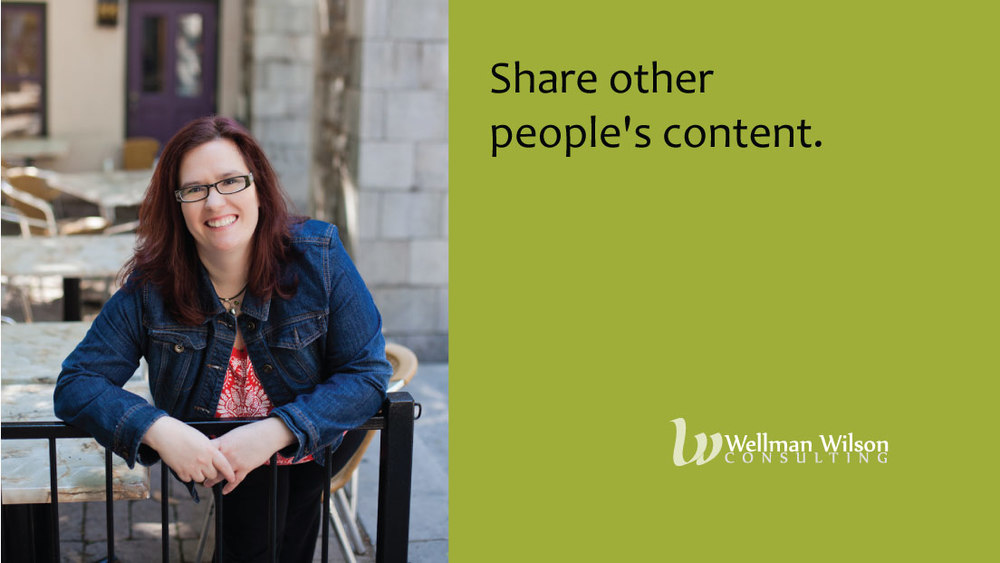 Every week I compile a list of the noteworthy social media news (Buzz), balanced with valuable commentary (Brilliance) and some good advice about Blogging as well. The links that follow are to sites and blogs that I read on a regular basis - consider them recommended reading for you too. Or you can just come back here each week for biggest news and best advice.
Every week I compile a list of the noteworthy social media news (Buzz), balanced with valuable commentary (Brilliance) and some good advice about Blogging as well. The links that follow are to sites and blogs that I read on a regular basis - consider them recommended reading for you too. Or you can just come back here each week for biggest news and best advice.
~Karen
Buzz
 Here’s a look back at the first year with Google+. It’s not exactly news, but it’s interesting to look at it’s evolution. It’s also interesting to see that some enthusiastic early adopters aren’t quite as enamored anymore. I feel like saying, “I told you so” to the “not a Facebook killer” part.
Here’s a look back at the first year with Google+. It’s not exactly news, but it’s interesting to look at it’s evolution. It’s also interesting to see that some enthusiastic early adopters aren’t quite as enamored anymore. I feel like saying, “I told you so” to the “not a Facebook killer” part.
 LinkedIn and Twitter have broken up and I could not be happier! The fact is that Twitter broke things off, but you know what? LinkedIn should be doing the happy dance. These days when I log in (except for one enterprising contact who has hacked their way into keeping tweets in their feed), I found LinkedIn pleasant enough that I want to go back in soon - probably even tomorrow! There’s the same amount of signal, but it’s not being overpowered by the noise.
LinkedIn and Twitter have broken up and I could not be happier! The fact is that Twitter broke things off, but you know what? LinkedIn should be doing the happy dance. These days when I log in (except for one enterprising contact who has hacked their way into keeping tweets in their feed), I found LinkedIn pleasant enough that I want to go back in soon - probably even tomorrow! There’s the same amount of signal, but it’s not being overpowered by the noise.
 Twitter’s recent changes to the API (short form for application programming interface) access have lead some to be very concerned about the possibility of third-party apps being cut off. No one should take this lightly. Personally, I rarely use twitter.com and I don’t like the mobile apps that Twitter has built (they aren’t even installed on my devices anymore). Should third-party apps be cut off, I will probably limit my use of twitter pretty drastically. The latest speculation involves a leaked photo of what may be the next iteration of the Twitter for iPhone app and what it may mean based on recent events.
Twitter’s recent changes to the API (short form for application programming interface) access have lead some to be very concerned about the possibility of third-party apps being cut off. No one should take this lightly. Personally, I rarely use twitter.com and I don’t like the mobile apps that Twitter has built (they aren’t even installed on my devices anymore). Should third-party apps be cut off, I will probably limit my use of twitter pretty drastically. The latest speculation involves a leaked photo of what may be the next iteration of the Twitter for iPhone app and what it may mean based on recent events.
If Twitter starts limiting third party apps, eventually the service may get some real competition. We don’t want the ability to microblog to go away. Otherwise, how else would anyone retweet boneheaded things people tweet? What’s amazing is how many of the pictures are still up after this account retweeted them.
Finally, Twitter promised this week to REVOLUTIONIZE SEARCH! What they did was add search features that exist in a lot of other places already. While they’ve done some good things with this latest update, revolutionary isn’t a word I’d use to describe it. I wouldn’t yawn, either. I rarely use twitter.com, so I’m basically just indifferent about it.
 Facebook has been busy dealing with the email fiasco and coming up with an explanation. If you’re one of the ones who syncs your phone contacts with Facebook, here’s how to fix the email address problem.
Facebook has been busy dealing with the email fiasco and coming up with an explanation. If you’re one of the ones who syncs your phone contacts with Facebook, here’s how to fix the email address problem.
Brilliance
I read somewhere that email is your biggest social network and that resonated with me. Just think about how many contacts you’re emailing all the time! That calls for some solid strategy for email use as a sales tool.
We’re inundated with information all the time now, regardless of where we are, thanks to smartphones. This influx of data has given many reason to believe that it’s ruining productivity. But, what if that isn’t always true? Here’s another side to think about. There is a case to be made for using tools at our disposal more efficiently as well. Being more aware of productivity killers is essential as well.
Seeing a brand use social media successfully is exciting. Seeing a Canadian brand highlighted that has numerous fans and detractors is even more interesting. Check out this post about what Rogers is doing to transform relations with its critics.
This is a long article, but well worth the read if you have any struggles at all with establishing (or maintaining) your social media marketing process.
Blogging
After you’ve been blogging for a while, you may start to feel burnt out. Taking a break may be your first instinct, but you might want to try one of these other ideas first.
What are your blogging tenets? Have you ever thought about it? These three - patience, strength and belief - are definitely essential. In particular, when it comes to business blogs, do your writer(s) truly believe in what they’re saying? Lack of belief in something will be noticed by the audience.
There is one risk to blogging valuable content that bloggers will likely never win the war against, but it’s good to be aware of and do what you can to fight back. The scariest part of this is that the content is being used to support “expertise” in social media. Vet the people you’re working with very carefully. They may not be what they seem.
What are the secrets to success in blogging? Here’s one attempt to pinpoint some triggers. I think success cannot be defined by any particular formula, but there is some good advice in here.
App of the Week: I’m just getting into Springpad over the last week, but I’ve been wanting to check it out for quite a while. With Web, iOS and Android apps, this is a powerful tool with a beautiful interface that I’m quickly growing to rely on for notes and tasks. Or at least I’m working on developing the habit. :) If you’re an Evernote user already, you might be interested in reading this overview of how Springpad differs (it has more). If I have time this week, I’m going to check out Ping and report back next week.
 As business owners, you probably know there is a ton of value that can be gained by going to networking events. Going to your local chamber of commerce meetings, joining a small, but consistent weekly networking group, or going to conferences lets you meet all kinds of new people and learn new things.
As business owners, you probably know there is a ton of value that can be gained by going to networking events. Going to your local chamber of commerce meetings, joining a small, but consistent weekly networking group, or going to conferences lets you meet all kinds of new people and learn new things.








